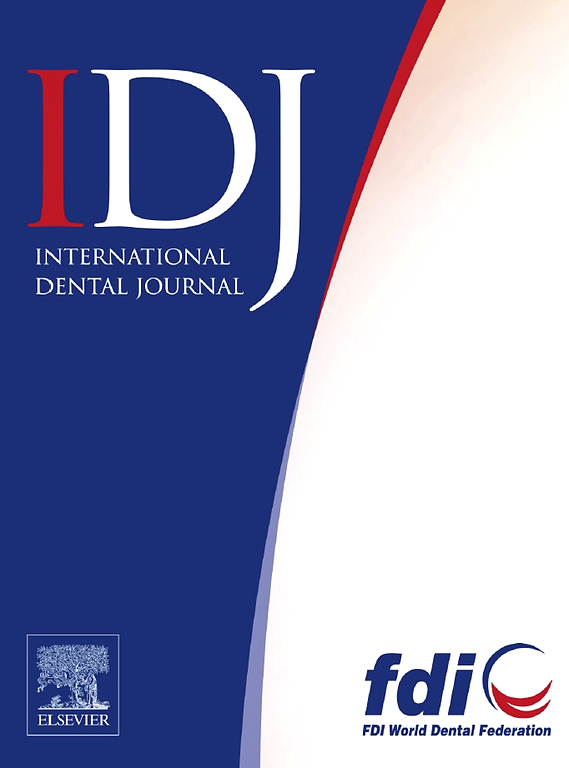基于药物警戒的口腔溃疡相关药物鉴定。
IF 3.7
3区 医学
Q1 DENTISTRY, ORAL SURGERY & MEDICINE
引用次数: 0
摘要
背景:口腔溃疡是一种常见的疼痛病变,严重影响生活质量。某些药物,特别是抗代谢物和mTOR抑制剂,与它们的发展有关。然而,药物引起的口腔溃疡尚未使用大规模真实世界数据进行系统评估。方法:采用药物警戒信号挖掘与多元logistic回归分析相结合的双重验证策略。通过查询特定的“首选术语”(PTs),确定了美国食品和药物管理局FAERS数据库中与口腔溃疡相关的不良事件报告。使用四种歧化分析方法进行信号检测。对于初步筛选的候选药物,构建多因素logistic回归模型,调整潜在混杂因素,如年龄、性别、体重、报告者类型、报告国家和年份,进一步验证其与口腔溃疡报告的独立相关性(PFDR < 0.05)。结果:自2010年以来,口腔溃疡的报告呈显著且持续的增长,并在2020年达到顶峰。多方法验证框架确定了289个具有统计学意义的药物-口腔溃疡相关信号。信号强度最高的药物包括环丙嗪、霉酚酸钠和阿雷迪亚。其他具有显著信号的药物包括乳果糖、磷酸对乙酰氨基酚可待因、来氟米特、奥玛单抗、依维莫司和阿特唑单抗。综合信号检测结果,logistic回归分析进一步证实多种药物与口腔溃疡发生风险有显著相关性。具有极高优势比(or)的药物包括雌三醇和多西他赛sagent。密切相关的药物还包括免疫抑制剂、抗组胺药、联合镇痛药、双膦酸盐、沙坦类药物和抗生素。结论:本研究系统地确定了大约289种与口腔溃疡风险显著相关的药物,包括免疫抑制剂、心血管药物和支气管扩张剂。基于药物警戒信号检测和回归分析,长期使用这些药物的患者应加强口服监测。由于这是一项观察性研究,需要进一步的前瞻性和实验研究来确认因果关系。本文章由计算机程序翻译,如有差异,请以英文原文为准。
Identification of Drugs Associated With Oral Ulcers Based on Pharmacovigilance
Background
Oral ulcers are common, painful lesions that significantly affect quality of life. Certain medications, especially antimetabolites and mTOR inhibitors, have been implicated in their development. However, drug-induced oral ulcers have not been systematically evaluated using large-scale real-world data.
Methods
The study employed a dual-validation strategy combining pharmacovigilance signal mining and multivariate logistic regression analysis. By querying specific ‘preferred terms’ (PTs), adverse event reports in the FAERS database of the Food and Drugs Adminstration of USA, related to oral ulcers were identified. Signal detection was conducted using four disproportionality analysis methods. For the initially screened candidate drugs, a multivariate logistic regression model was constructed, adjusting for potential confounders such as age, gender, weight, reporter type, reporting country and year, to further validate their independent association with oral ulcer reports (PFDR < .05).
Results
Reports of oral ulcerations have shown a significant and sustained increase since 2010, peaking in 2020. The multi-method validation framework identified 289 statistically significant drug-oral ulceration association signals. Drugs with the highest signal strength included cyclizine, mycophenolate sodium and aredia. Other drugs with significant signals included lactulose, acetaminophen codeine phosphate, leflunomide, omalizumab, everolimus and atezolizumab. Integrating signal detection results, logistic regression analysis further confirmed that multiple drugs were significantly associated with the risk of oral ulcer reports. Drugs with extremely high odds ratios (ORs) included estriol and docetaxel sagent. Strongly associated drugs also included immunosuppressants, antihistamines, combination analgesics, bisphosphonates, sartans and antibiotics.
Conclusion
This study systematically identified approximately 289 drugs significantly associated with oral ulcer risk, including immunosuppressants, cardiovascular drugs and bronchodilators. Based on pharmacovigilance signal detection and regression analysis, patients on long-term treatment with these drugs should receive enhanced oral monitoring. As this is an observational study, further prospective and experimental research is needed to confirm causality.
求助全文
通过发布文献求助,成功后即可免费获取论文全文。
去求助
来源期刊

International dental journal
医学-牙科与口腔外科
CiteScore
4.80
自引率
6.10%
发文量
159
审稿时长
63 days
期刊介绍:
The International Dental Journal features peer-reviewed, scientific articles relevant to international oral health issues, as well as practical, informative articles aimed at clinicians.
 求助内容:
求助内容: 应助结果提醒方式:
应助结果提醒方式:


